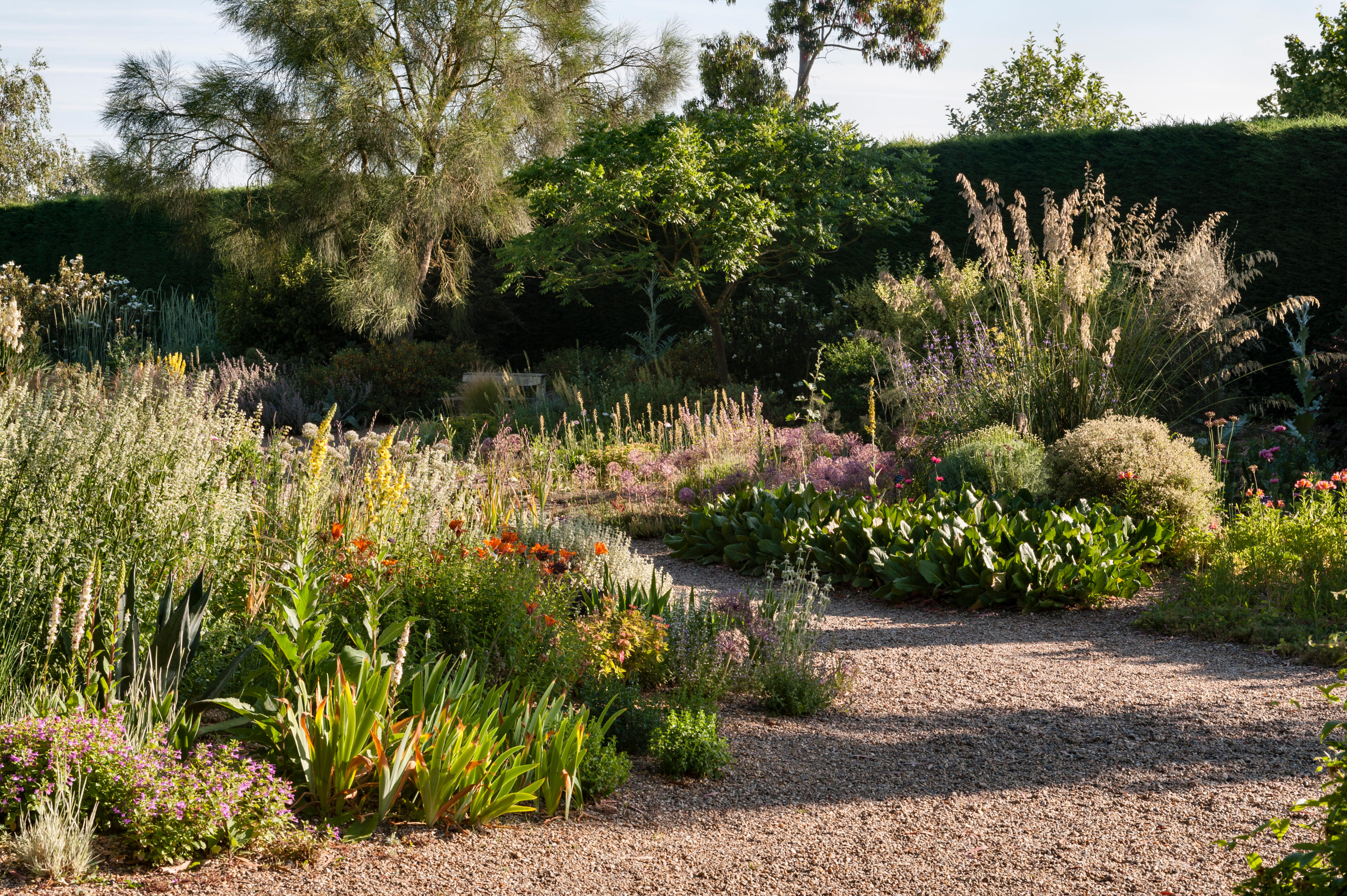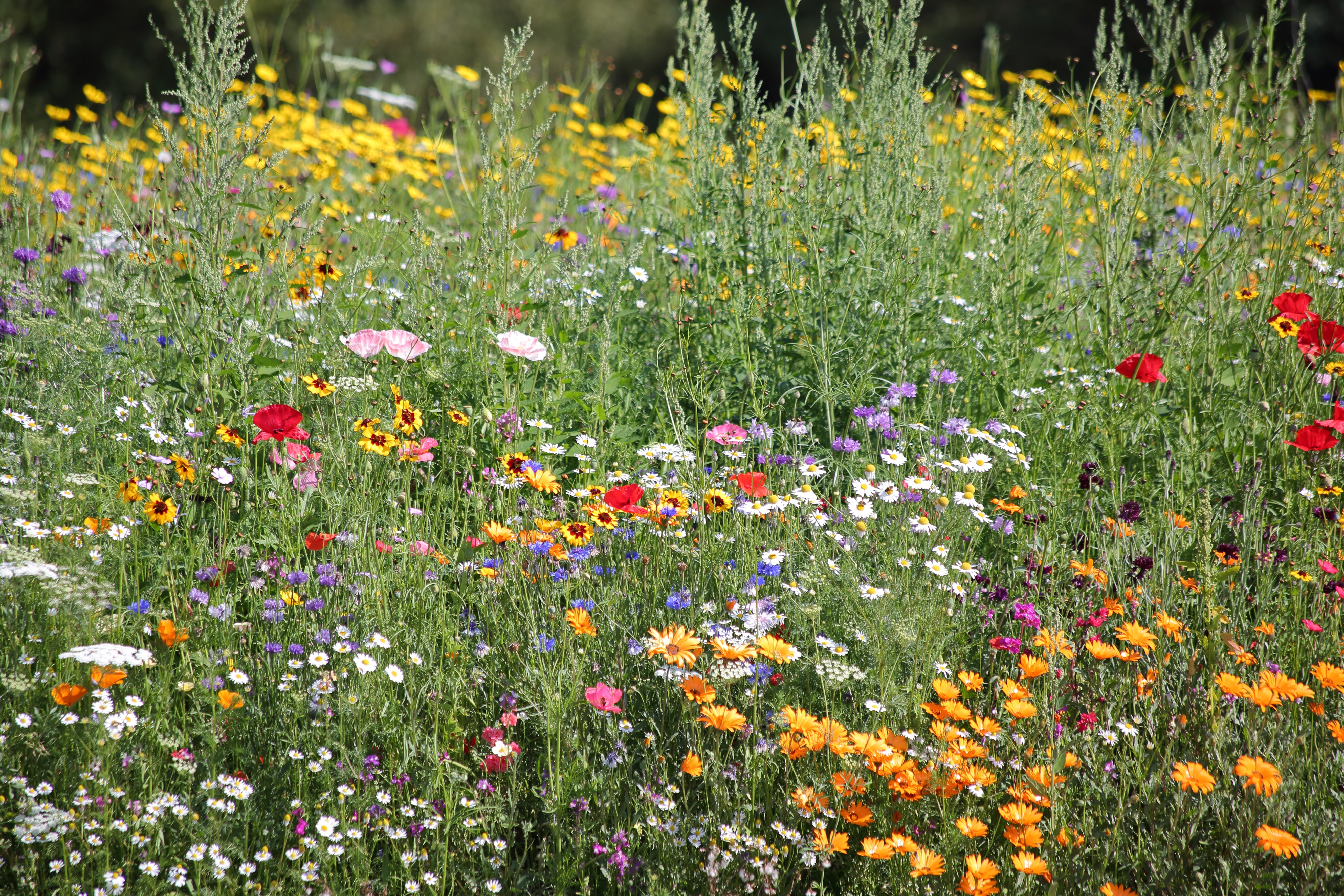The grass isn’t always greener on the other side: Five alternatives to lawn, from fleshy sedums to aromatic thyme
No Mow May and similar initiatives want to inspire gardeners to replace their lawns with pollinator-friendly alternatives — but knowing where to start and what to do is an off-putting minefield.


Earlier this week, Country Life reported that King’s College, Cambridge, has replaced its ‘once extensively manicured turf’ with a ‘lush, majestic meadow.’ The carpet of poppies, cornflowers and oxeye daisies — which stretches from the college chapel to the River Cam — first flourished in 2020, after three years of sowing and maintenance.
The impact on biodiversity has been astonishing — bat numbers in the college gardens have increased threefold and invertebrates by 25 times — but, oh my, do we all underestimate the work a wildflower meadow requires in order for it to take hold and succeed. Firstly, you will need patience, because it can take years to convert a lawn into a well-balanced mix of grass and wildflowers. Secondly, you need the right kind of soil — well-drained and low in nutrients. This may entail scrapping off the layer of topsoil that allows grass to flourish and overwhelm everything. Thirdly, you will need to ensure that your wildflower-meadow-to-be is in full sun.
If we’ve already put you off, you’ll be happy to hear that there are other — sometimes less laborious — alternatives to having a lawn. After all, lawns have taken plenty of flack for being what detractors call ‘a biodiversity desert’ in recent years. Some are more transformative than others, but the single most important thing to remember is that you don’t have to do away with every inch of lawn altogether. Mix and match. Embrace something more manicured in one area of the garden, and leave other bits to grow up and blend into the landscape. Or, let it all grow up and then mow paths and areas to sit, eat and play in…
Your garden is your oyster, so, without further ado, here are five ideas that will hopefully inspire your next green-fingered adventure.
Gravel
You can construct a gravel garden in any sort of area, but the plants themselves — typically Mediterranean — favour sandy, well-drained soil with low fertility levels.
The majority of garden designers agree that the single most important step is to ‘blitz all perennial weeds. Once that’s done, you’ll need to decide on the type of gravel you want to use (the RHS recommends trying to match it to the colour of any existing paving and stone structures) and whether or not you require plants to self seed (if you don’t, you can go in with an underlayer of landscape fabric — a textile material designed to inhibit the growth of weeds).
Creeping thyme

Thyme releases scent when it's bruised or disrupted, including when it rains.
Creeping thyme is a dwarf, aromatic shrub with very small, pointy dark green leaves and, in the summer, clusters of purple flowers.
Exquisite houses, the beauty of Nature, and how to get the most from your life, straight to your inbox.
It does well in full sun and can survive for up to 10 years in an exposed or sheltered spot. It is also drought resistant and therefore requires minimal watering.

You can opt for a full creeping thyme lawn (it’s great ground cover, but works best on smaller areas) or restrict its use to in between paving stones or wooden steps so that the scent is released and wafts slowly upwards as you walk.
The downside? It can be costly endeavour because the thyme has to be bought as plants.
Clover

There is plenty to praise clover — a member of the pea family — for. Most importantly, it is a valuable source of nectar for bees and as it can cope with some foot traffic, clover makes an excellent alternative to lawn grass species, particularly on poor, dry soils. Some gardeners have fully embraced the benefits of clover and have re-seeded lawns with white clover, using dwarf agricultural cultivars or strains, such as Kent wild white. Clover lawns are a far more sustainable and environmentally friendly alternative to labou- and resource-intensive fine lawns. It also helpfully produces its own nitrogen so it doesn’t need fertiliser to keep it looking green and healthy.
Instead of going the whole hog, you can let clover establish in lone clumps on an otherwise neat lawn. Alternatively, use a combination of clover and grasses so that when the clover goes dormant in winter, you don’t end up with too much exposed soil.
Sedums

Let’s start by admitting that sedum matting won’t be for everyone. Chiefly because the plants are much more delicate than lawn and won’t cope with heavy frequent foot traffic. The upside is that the effect, preferably on a front garden or sloping lawn, is visually arresting — a patchwork of fleshy textures that are kind to the environment and a magnet to pollinating insects.
Top tips include removing any existing ground cover and grass from the site, tilling to a depth of 15cm and watering plants weekly for the first month. Once established, they’re reliably drought tolerant.
Wildflowers

Country Life columnist Alan Titschmarsh’s own two-acre wildflower meadow was a decade in the making — though it now requires little to no maintenance. He recommends sowing in October, ‘as the seed will be vernalised’. Our garden editor, Tiffany Daneff, says to sow yellow rattle, alongside your chosen seed mix, because it will predate on any pesky grass that tries to stage a comeback.
The Plantlife website contains even more handy tips and tricks, such as controlling any problem plants that could prevent your meadow from thriving (nettle, creeping thistle, dock, bramble and scrub), and mowing your meadow area after plants have finished flowering and set seed, and again at the end of winter.
Finally, Lindum Turf produces ready-to-roll wildflower turf, featuring a careful balanced blend of native wildflowers, herbs and perennials, planted at optimum density for the best possible results.
Rosie is Country Life's Digital Content Director & Travel Editor. She joined the team in July 2014 — following a brief stint in the art world. In 2022, she edited the magazine's special Queen's Platinum Jubilee issue and coordinated Country Life's own 125 birthday celebrations. She has also been invited to judge a travel media award and chaired live discussions on the London property market, sustainability and luxury travel trends. Rosie studied Art History at university and, beyond Country Life, has written for Mr & Mrs Smith and The Gentleman's Journal, among others. The rest of the office likes to joke that she splits her time between Claridge’s, Devon and the Maldives.
